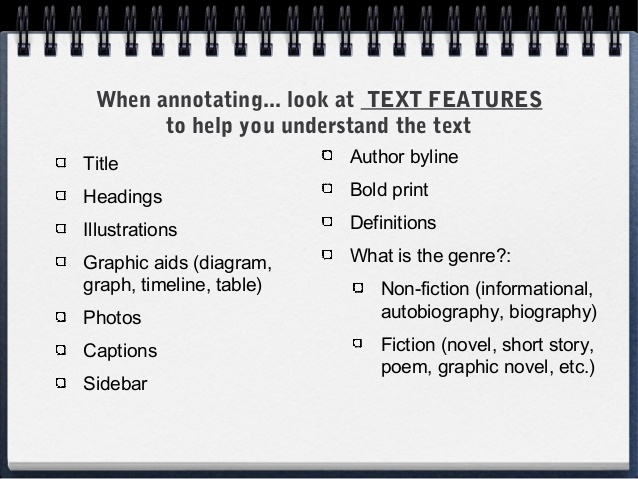

Example: Yellow for definitions, orange for questions, and blue for disagreement/confusion.

As you annotate, use these strategies to make the most of your efforts: You can also annotate on post-its if you have a text you do not want to mark up. You can annotate by hand or by using document software. Annotating means you are doing the hard work while you read, allowing you to reference your previous work and have a clear jumping-off point for future work.

Even if you regularly understand and remember what you read, annotating will help you summarize a text, highlight important pieces of information, and ultimately prepare yourself for discussion and writing prompts that your instructor may give you. However, annotating isn't just for people who feel challenged when reading academic texts. As you annotate, you should note the author's main points, shifts in the message or perspective of the text, key areas of focus, and your own thoughts as you read. This page will introduce you to several effective strategies for annotating a text that will help you get the most out of your reading.īy annotating a text, you will ensure that you understand what is happening in a text after you've read it. Sometimes called "close reading," annotating usually involves highlighting or underlining key pieces of text and making notes in the margins of the text. Annotating is any action that deliberately interacts with a text to enhance the reader's understanding of, recall of, and reaction to the text.


 0 kommentar(er)
0 kommentar(er)
